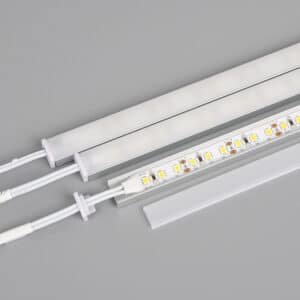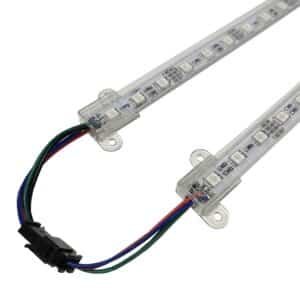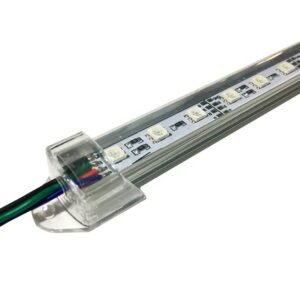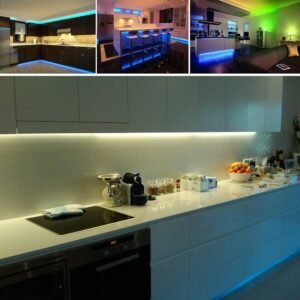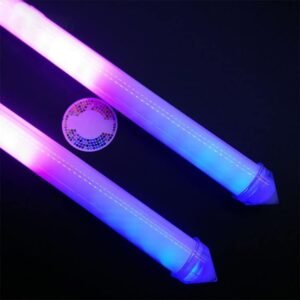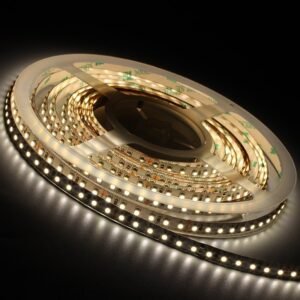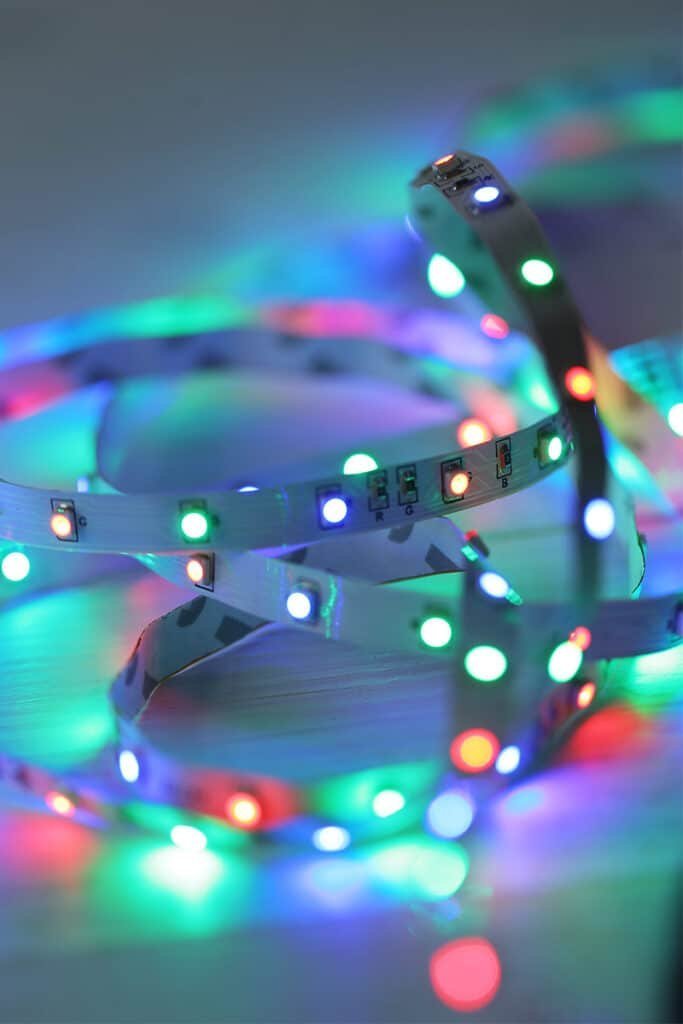Introduction to LED Rigid Bars
Welcome to the world of LED lighting! For stylish and efficient illumination of any space, LED rigid bars offer an ideal lighting solution. Over recent years, these robust yet flexible solutions have gained immense popularity due to their energy saving features, durability, and endless design potential.
What sets these LED rigid bars apart is their SMD LEDs, and we are here to shed some light on this term (pun intended!). In this article we’ll examine different types of SMD LEDs used in LED rigid bars as well as why their type matters.
So grab yourself a cup of coffee (or tea), get comfortable, and prepare to be amazed! Let’s jump right in.
What Are SMD LEDs (Surface Mount Device LEDs)?
Surface-Mount Device LEDs, also known as Surface-Mount Device LEDs (SMD LEDs), are widely used in various electronic applications including LED rigid bars. While traditional through-hole LEDs require solder leads to be soldered onto their circuit boards for installation, SMDs mount directly to PCB surfaces using solder paste or reflow soldering techniques for direct attachment.
SMD LEDs boast several advantages over their through-hole counterparts. Most notably, SMDs are much smaller in size, which enables higher packing density on PCBs – meaning more LEDs can fit on one rigid bar, producing brighter illumination than would otherwise be available.
SMD LEDs also boast excellent energy efficiency, with smaller diodes using less power while still producing light of comparable intensity to their larger through-hole counterparts. This makes them the ideal choice for rigid bar LED lighting applications where energy savings solutions are highly sought after.
SMD LEDs excel when it comes to design flexibility. Their adaptability means they can easily be integrated into different shapes and sizes without compromising performance or durability, from straight linear bars to curvier light strips – SMD LEDs have you covered!
SMD technology also allows for superior heat dissipation than through-hole mounting methods, helping ensure that your LED rigid bar lasts for years with little degradation in brightness over time.
SMD LEDs add numerous advantages to LED rigid bars – from their compact size and energy efficiency, design flexibility, and enhanced heat management – that make them the ideal solution for applications ranging from residential ambient lighting displays to commercial signage displays.
The Different Types of SMD LEDs
Surface-Mount Device Light-Emitting Diodes, more commonly referred to as SMD LEDs, offer various features and benefits. One such SMD LED type is the 3528 SMD, which offers compact yet powerful solutions in terms of color emission for backlighting applications.
Another type is the 5050 SMD LED, known for its larger size and higher brightness compared to 3528 LEDs. These versatile lights can emit multiple colors simultaneously for use in RGB lighting applications.
For those in search of extra brightness, there’s the 5630 SMD LED. Boasting larger size and high lumen flux output, it provides excellent illumination suitable for various purposes including task lighting or signage purposes.
If energy efficiency is of prime concern, 2835 SMD LED may be the ideal choice; these lights use less electricity while still offering enough brightness.
These are only some examples of SMD LEDs currently available on the market, each offering unique characteristics suitable for specific applications. When choosing an SMD LED for an LED rigid bar project, consider factors like desired brightness level, color options needed, energy consumption requirements and overall performance expectations when making your selection.
At the end of the day, finding the ideal solution will depend on your own individual needs and preferences – take some time to explore all available options before making a final decision!
Comparison of Different SMD LED Types
SMD LEDs used in LED rigid bars come in various varieties and offer their own individual benefits and drawbacks, so it is crucial that consumers understand these differences prior to making any definitive decisions.
One popular SMD LED model is the 3528. With its smaller form factor and still sufficient level of brightness, it is commonly used for decorative lighting applications or when lower intensity light output is desired.
However, the 5050 SMD LED offers greater brightness due to its larger size. It emits more light, providing brighter illumination in areas such as task or accent lighting.
2835 SMD LEDs provide high efficiency at low power consumption, boasting excellent heat dissipation properties and wide viewing angles, making them suitable for general lighting applications.
We present the 5630 SMD LED which boasts even higher levels of brightness than its predecessors, thanks to improved thermal management features and its high color rendering index (CRI). As it provides intense illumination in commercial spaces and other spaces requiring intense illumination.
Understanding the differences among various SMD LED types allows you to select one that best meets your application needs – be it low intensity decorative lighting or higher intensity task lighting! There’s sure to be one out there that suits!
Applications of SMD LEDs in LED Rigid Bars
SMD LEDs have become an invaluable addition to the lighting industry due to their versatility and energy-efficiency. Used in applications ranging from rigid bars to handheld lamps, SMDs have quickly become one of the go-to choices in lighting design.
One of the main uses for SMD LEDs in LED rigid bars is task lighting. Their bright, focused light makes them an excellent solution for lighting workstations, countertops, or any area requiring precise illumination. Their well-defined light minimizes shadows while improving visibility.
SMD LED rigid bars can also be used decoratively to produce stunning visual effects when installed behind translucent materials or diffusers, creating stunning visuals in their environment. From accentuating architectural features to creating ambience in retail displays or entertainment venues, SMD LEDs offer endless creative lighting design possibilities with these compact yet vibrant lights.
SMD LEDs are used not only for task and decorative lighting applications but are increasingly being utilized for signage and display on rigid bars. Their small form factor gives more freedom when designing intricate shapes or letters – whether on an outdoor billboard or an indoor digital screen, SMD LEDs deliver high brightness levels and excellent color consistency.
SMD LED rigid bars have numerous applications and capabilities that range from increasing visibility during tasks to producing breathtaking visual displays, SMD diodes continue to revolutionize how we illuminate our surroundings.
Factors to Keep in Mind when Selecting SMD LEDs for LED Rigid Bars
When selecting SMD LEDs for LED rigid bars, there are various factors you must keep in mind in order to choose the most effective options. Not only will these affect its quality and performance but they will also impact on efficiency and lifespan of this lighting solution.
One key factor is brightness or luminous intensity of SMD LEDs, which ultimately determines how visible and bright LED rigid bars will be. Depending on your specific application needs, different levels of brightness may be desired.
Color temperature is another key consideration in lighting installations, with various SMD LED types offering different temperatures, from warm white (2700K-3000K) to cool white (6500K-6500K). Your choice will depend on what kind of atmosphere or functionality your lighting installation requires.
SMD LEDs with lower wattages can significantly cut energy costs while still providing adequate illumination, so make sure to select those.
Durability and reliability should also be kept in mind when selecting SMD LEDs for LED rigid bars. Look for components which can withstand shocks, vibrations, or other environmental influences that could potentially reduce their lifespan.
Compatibility between lighting components such as drivers or controllers is vital for successful integration within your lighting system.
By considering these factors during your selection process, you can ensure that SMD LEDs fit both your functional needs and aesthetic preferences without compromising performance or quality!


